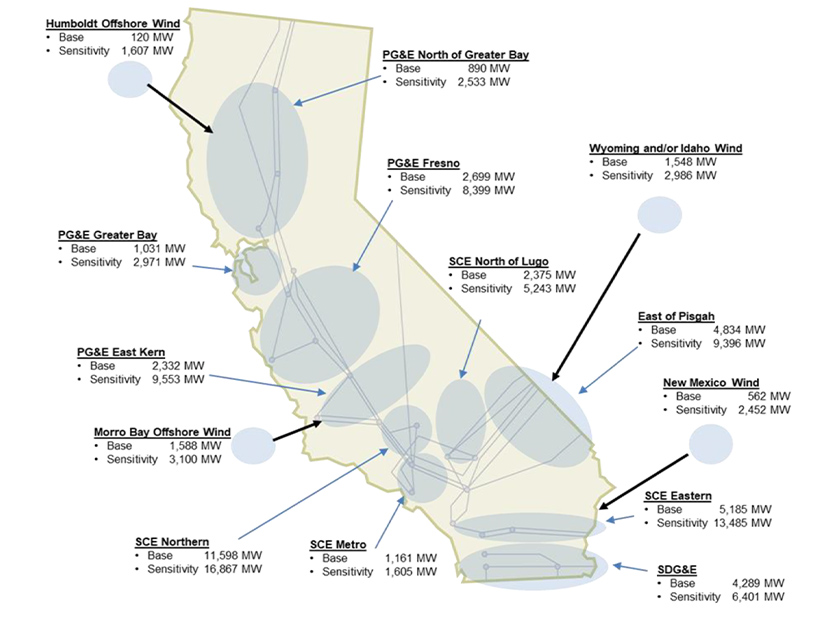
As CAISO grapples with an “unprecedented” surge in interconnection requests, it has proposed prioritizing requests in zones where transmission capacity now exists or is under development.
As CAISO grapples with an “unprecedented” surge in interconnection requests, the system operator has proposed prioritizing requests in zones where transmission capacity now exists or is under development.
The “zonal approach” is outlined in a straw proposal CAISO released Sept. 21 as part of its 2023 Interconnection Process Enhancements (IPE) initiative.
CAISO has been overloaded with interconnection requests resulting from the rapid pace of clean energy development in California as the state works toward a goal of 100% clean energy by 2045.
The most recent group of interconnection requests, Cluster 15, included about 544 requests totaling around 354 GW. That compares to 150 requests in 2020 and 373 requests in 2021.
CAISO said the increased number of requests is “unsustainable” and has overwhelmed existing processes.
“The ISO needs a significantly reformed structure to advance viable projects and prevent stagnant projects from hindering the progress of viable projects in the queue,” CAISO said.
In response, the straw proposal lays out a “significantly reformed interconnection process” aimed at promoting “rapid deployment of new generation for reliability, affordability and decarbonization.”
Zones, Scoring and Auction
CAISO calls the zonal approach a “central tenet” of its straw proposal. The ISO said its 2022/23 transmission plan took a zonal approach to planning for the resources in the portfolio provided by the California Public Utilities Commission for that cycle, “setting the foundation for the alignment of procurement and interconnection process enhancements.”
Under the proposal, projects in zones with available transmission capacity would be prioritized to move into the study process.
CAISO noted the importance of publicly providing information on the priority zones before opening an interconnection request window, such as a heatmap showing available transmission capacity. A heatmap is one of the requirements of FERC Order 2023, issued in July, regarding interconnection reform. (See FERC Updates Interconnection Queue Process with Order 2023.)
In another proposal, CAISO would use a scoring system in situations where the capacity of interconnection requests exceeds the available transmission capacity within a zone by more than 150%. Scoring criteria might include interest from an offtaker, permitting status and commercial readiness.
In some cases, CAISO would also conduct an auction in which winners would be prioritized and studied in a certain zone. The auction would occur when proposed capacity exceeds the capacity limit for a zone, after viability criteria are applied.
CAISO said an auction process may be needed “to achieve manageable queue volumes and preserve the competition of viable projects in each zone.” The ISO acknowledged that the auction proposal raised a number of stakeholder questions, including how the auction proceeds would be spent.
Interconnection Option B
The proposal also includes a process, called Option B, for requests to interconnect outside of priority zones. Those projects would be required to pay for needed network upgrades.
CAISO held a series of stakeholder meetings over the summer to come up with ideas for addressing the high volume of interconnection requests. (See CAISO Tries to Shake up Its Interconnection Process.)
Comments on the new straw proposal are due Oct. 12. After that, CAISO will release a second draft, followed by another round of comments. The proposal is expected to go to the CAISO Board of Governors for approval in February.
The straw proposal is part of Track 2 of the 2023 IPE initiative. Track 1 involved changes to the Cluster 15 study schedule that were approved by the Board of Governors in May.


